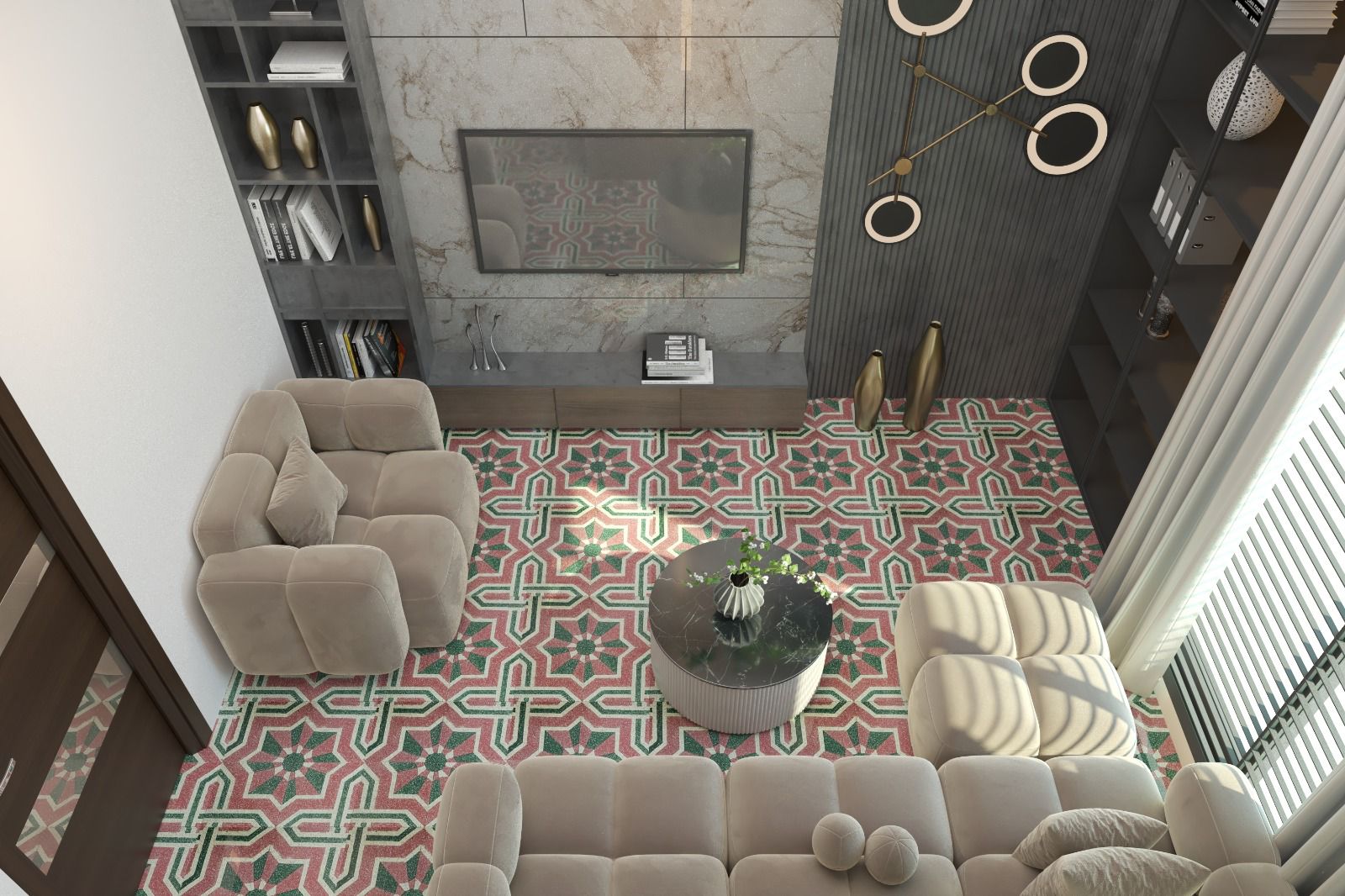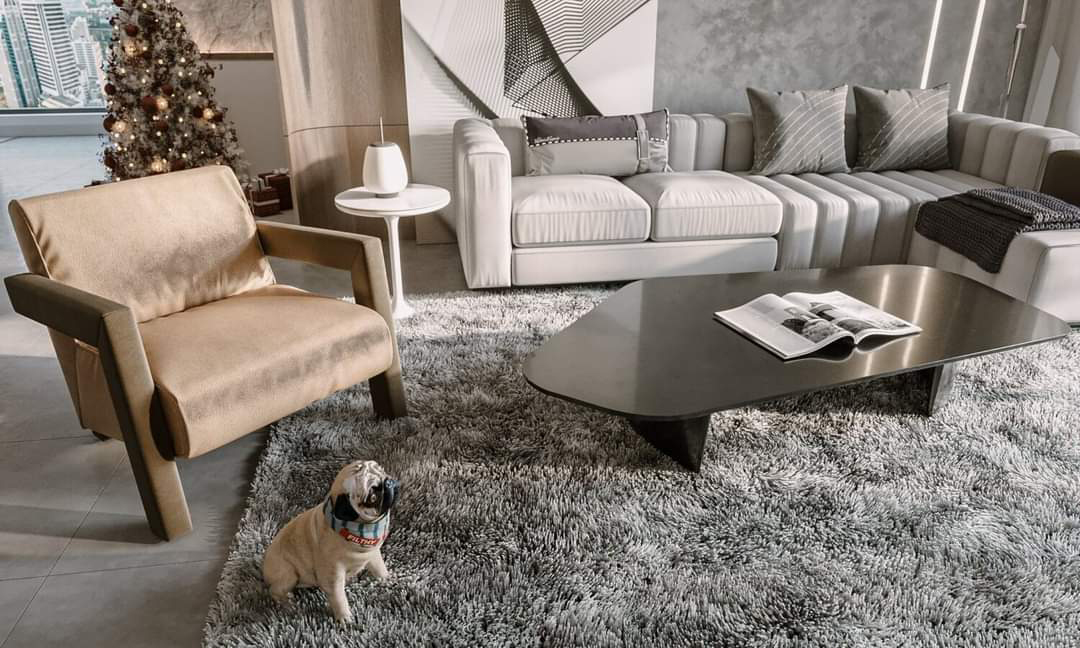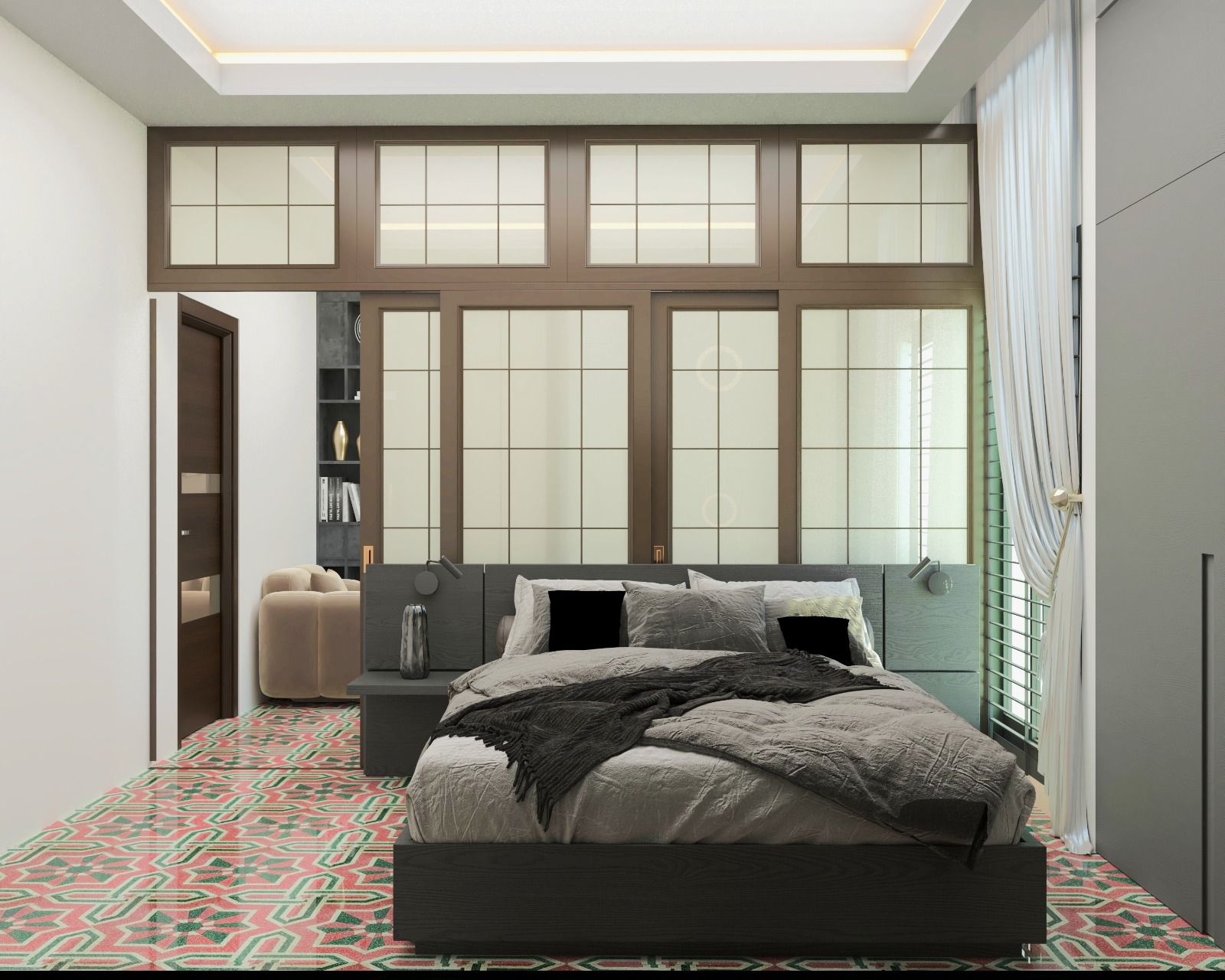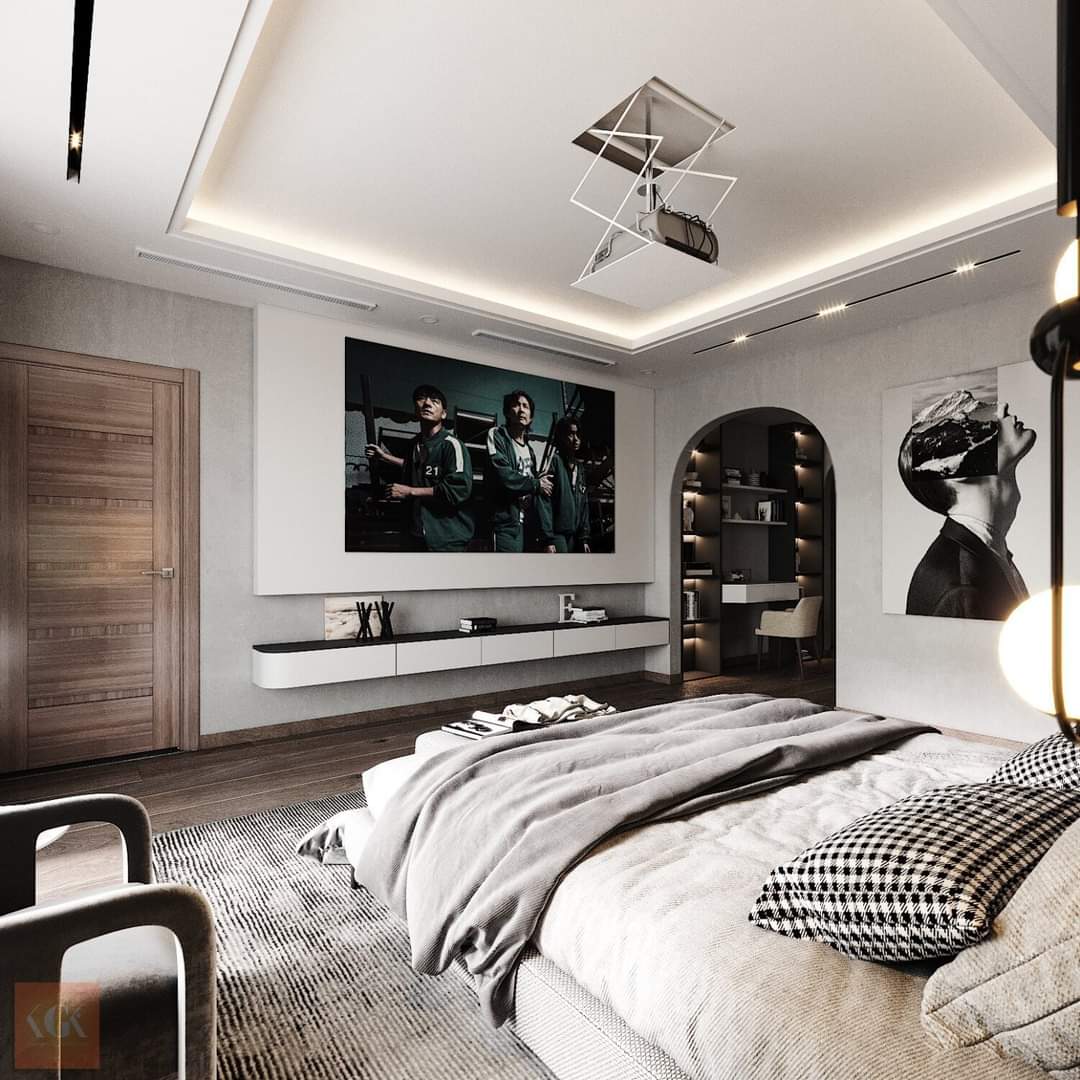
Modern Drawing Room Interior Design Ideas

Introduction
Creating a stylish and functional drawing room requires more than choosing beautiful furniture. In Bangladesh, where urban apartments are compact and family gatherings are central to daily life, drawing room interior design must balance aesthetics with practicality.
This guide explores modern living room design ideas for 2025, drawing on recent trends and expert advice to help you craft a comfortable, contemporary space that reflects your personality.
1. Embrace Minimalism and Functionality
Minimalism is no longer just a Western concept; it has firmly taken root in Bangladesh.
Designers note that homeowners are moving away from heavy furniture and ornate patterns, opting for clean lines and uncluttered spaces. Minimalist living rooms favor functional pieces and sleek designs because they make small apartments feel larger.
- Clean lines and uncluttered spaces – Use low‑profile sofas and simple coffee tables to create a spacious feel. Avoid unnecessary decorations so each piece has room to shine.
- Neutral foundations – Build your design on a base of whites, greys and beiges; these neutral tones create a calm background that enhances the perception of space.
- Multi‑functional furniture – In apartments where every square foot matters, multi‑functional pieces such as modular sofas, foldable tables and storage ottomans help maximize space. For example, a sofa bed can double as guest accommodation, while storage ottomans hide clutter.
- Dual‑purpose spaces – With more people working from home, rooms often need to serve as both living and working areas. Arrange your furniture to create zones, using rugs or shelving to define a work corner within the drawing room.
Minimalism promotes ease of maintenance as well. Light, simple pieces are easier to clean and complement open floor plans.

2. Color Palettes: Neutral Bases with Vibrant Accents
Bangladeshi homeowners are gravitating toward neutral and earthy hues. Designers note that beige, white, taupe and grey create a restful environment and provide flexibility to change décor over time. However, neutrals do not mean boring; adding bold accents can bring energy and personality to the room.
- Earth‑inspired colors – Terracotta, muted greens, warm browns and clay tones connect the interior to nature. These hues reflect local materials and craft traditions.
- Vibrant accents – Use cushions, rugs or artwork in mustard, teal or blue to add pops of color. In 2025, designers also encourage bold patterns and statement walls to break up minimalism.
- Avoid all‑white – Past years favored all‑white schemes, but current trends embrace light colors mixed with bolder accents.
- Statement walls – Textured paints or matte finishes in earthy colors create focal points without overwhelming the room.
By pairing a neutral base with strategic pops of color, you can create a modern living room design that feels both serene and lively.

Ready to transform your office? Get in touch with the best interior firms in Bangladesh to start designing a space that aligns with your startup’s goals and culture. The right design can make all the difference!
3. Integrate Sustainable and Natural Elements
Sustainability is a core theme in 2025’s interior design. Roughly 65 % of Bangladeshi homeowners prefer eco‑friendly materials such as bamboo, jute and reclaimed wood. Beyond environmental benefits, natural materials also add warmth and texture to your space.
- Use natural materials – Furniture crafted from bamboo, cane or rattan is lightweight and sustainable. Rattan furniture, once common in Bangladeshi households, is making a comeback because it’s eco‑friendly and adds a rustic touch.
- Indoor plants – Biophilic design is gaining popularity; placing indoor plants like snake plants or peace lilies purifies the air and creates a calming atmosphere. The pandemic has pushed homeowners to bring nature inside, with organic plants becoming a major trend.
- Maximize natural light – Large windows or glass doors brighten the drawing room, making it feel more open. Sheer curtains allow sunlight to filter in while maintaining privacy. Natural light is also a key trend noted by interior experts.
- Sustainable fabrics and finishes – Choose eco‑friendly upholstery and rugs made from jute, cotton or recycled fibers. Such materials reduce indoor air pollution and provide a tactile connection to Bangladesh’s craft heritage.
Bringing nature into your room isn’t just visually pleasing; it creates a healthier living environment and aligns your home with global sustainability practices.
4. Smart and High‑Tech Additions
As technology becomes ubiquitous, smart home integration is transforming drawing rooms. Around 70 % of new homes in Bangladesh incorporate smart lighting, automated climate control and security systems. Even though high‑tech adoption is still growing, it’s becoming an essential feature in modern interiors.
- Smart lighting – Install dimmable LED lights and smart switches that allow you to adjust brightness and color temperature via a smartphone app. This flexibility enhances both ambiance and energy efficiency.
- Automated climate control – Smart air conditioners and fans can optimize temperature based on usage patterns, reducing electricity bills.
- Security systems – Biometric locks and Wi‑Fi‑enabled cameras offer greater safety and can be monitored remotely.
- Smart décor integration – Choose entertainment units that hide cables and allow seamless integration of technology into the room’s aesthetic.
Integrating technology enhances convenience without compromising the minimalist look, provided devices are integrated discreetly.
5. Blend Tradition with Modernity
Bangladesh’s rich cultural heritage continues to influence contemporary design. Many homeowners are blending traditional craftsmanship with modern aesthetics, creating unique spaces that celebrate identity.
- Local art and textiles – Hang Dhakaiya carpets, Nakshi Kantha (embroidered quilts) or terracotta art on the walls to bring cultural narratives into a modern room. People are increasingly seeking to express cultural roots in their homes.
- Handwoven fabrics – Use locally woven cushions, curtains or throws to add texture and authenticity.
- Traditional woods and craftsmanship – Incorporate handcrafted wooden furniture or carved coffee tables to bring warmth and craft heritage into a modern interior.
- Fusion furniture – Combine modern silhouettes with traditional materials; for example, a sleek sofa upholstered in handwoven fabric balances contemporary comfort with cultural flair.
This fusion approach ensures your drawing room interior design feels both current and deeply rooted in place.
6. Choose the Right Sofa and Seating
The sofa is often the centerpiece of a drawing room. Contemporary sofa design in Bangladesh prioritizes comfort, adaptability and aesthetics. Minimalist living rooms benefit from low‑profile sofas that create a sense of openness. Meanwhile, curved furniture is emerging as a trend because its organic shapes reflect nature.
When selecting seating:
- Modular or sectional sofas – These provide flexibility and can be reconfigured for gatherings or day‑to‑day use. Some include built‑in storage, perfect for small rooms.
- Curved and sculptural pieces – Curved sofas and chairs add visual interest and soften sharp lines.
- Sustainable materials – Choose sofas upholstered in natural fabrics and frames made from bamboo, cane or reclaimed wood.
- Comfort first – Ensure cushions are plush and seating is deep enough for relaxation. Comfort remains paramount in Bangladesh’s drawing rooms.
7. Lighting and Atmosphere
Lighting can dramatically transform a room. Designers highlight the importance of layering light sources by combining natural light with ambient, task and accent lighting.
- Natural light – Embrace sunlight through large windows and use sheer curtains to diffuse glare.
- Statement lighting – Pendant lights, chandeliers or sculptural lamps double as focal points and functional illumination.
- Layered lighting – Use floor lamps, wall sconces and under‑cabinet lights to create depth and flexibility; this approach enhances functionality and sets the mood.
- Tech‑enabled controls – Integrate smart lighting systems for easy customization.
Proper lighting not only improves visibility but also influences how colors, textures and décor elements are perceived.
8. Decor and Personalization
Your drawing room should tell your story. Personalized décor from local crafts to family photographs, adds warmth without cluttering the minimalist aesthetic.
- Textures and local accents – Incorporate jute, bamboo or cane in rugs, baskets and accent pieces to add depth and authenticity.
- 3D art and lively elements – Trend forecasts highlight the rising popularity of 3D artworks and interactive décor items that make homes feel more vibrant.
- Mirrors and reflective surfaces – Use mirrors to create an illusion of space and reflect natural light; they are especially useful in small drawing rooms.
- Limit accessories – A curated selection of décor items prevents clutter. Focus on quality over quantity.
Personal touches transform a living room from a generic space into your own sanctuary.
Conclusion
Modern drawing room interior design in Bangladesh balances functionality, aesthetics and cultural identity. By embracing minimalism, choosing neutral bases with vibrant accents, integrating sustainable materials, adopting smart technology, blending tradition with modernity, selecting comfortable and flexible furniture, optimizing lighting and adding personalized décor, you can create a living room that reflects both contemporary trends and your unique style.
Whether you live in a spacious home or a compact apartment, these actionable ideas will help you transform your drawing room into a welcoming, stylish and efficient space.
Author: Al-Amin Ifty, Design Doctors Studio @2025





